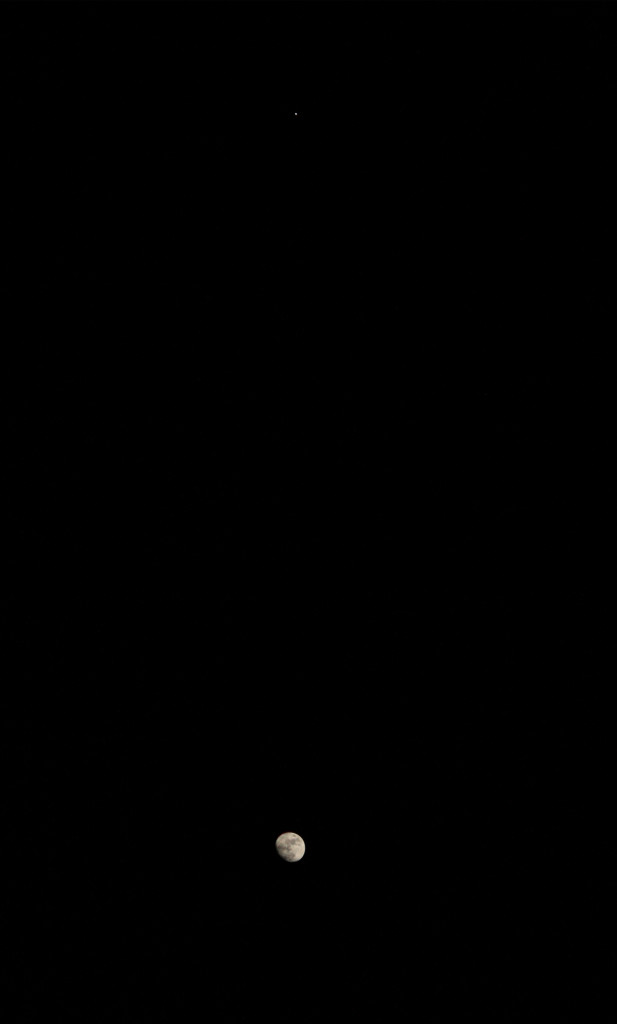Worth Looking Up For: Of Giants and Jail
Jupiter and the moon as viewed from Ann Arbor at 7 p.m. on Tuesday.
February 11, 2014
In the early 1600s, Galileo Galilei looked through a telescope and was sentenced to house arrest. The astronomer was convicted on behalf of Jupiter, whose moons he had observed rotating around the gas giant itself instead of the Earth, and remained under sentence for the rest of his life. Without a telescope, the scandalous orbits are invisible from Earth. The great planet itself, however, is one of the brightest objects in the night sky, after the moon and Venus but competitive with Mars. This Tuesday, Jupiter can be found to the upper right of a waxing gibbous moon in the eastern evening sky. Although the two celestial bodies are almost 365 million miles apart, a fist held at arm’s length will be just enough to separate them as they appear in the sky. Throughout the week, the moon will gradually wax until full as it continues the the lower left of our solar system’s largest planet.










